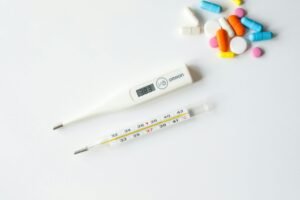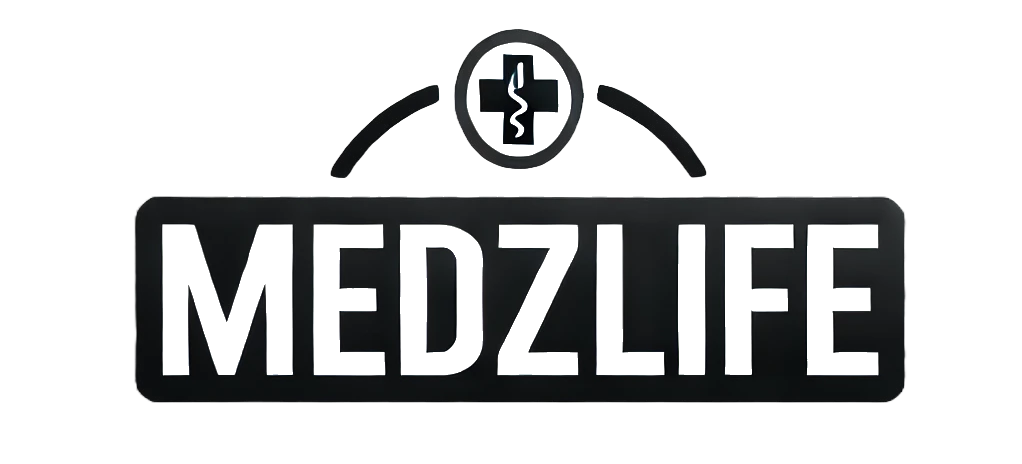Introduction to Meningitis:
Meningitis is a secret invader that strikes fear into the hearts of many. An infection that infiltrates the brain and spinal cord and destroys the central nervous system within hours. This is meningitis- a swift often harmful condition that needs immediate attention. But what exactly is meningitis? How does meningitis spread? And more importantly, how can we protect ourselves from meningitis? Join us as we delve into meningitis, uncovering the symptoms and causes of meningitis, and critical measures needed to fight against meningitis.
The Role of the Meninges: Anonymous Heroes
The meninges are the guardians and anonymous heroes of the central nervous system. They are tirelessly working to protect and nourish the brain and spinal cord. Three layers of meninges provide a triple shield to the brain and spinal cord. Dura Mater: The Tough Outer Layer, Arachnoid Mater: The Web-like Middle Layer, and Pia Mater: The Gentle Inner Layer. Without these three layers, our vital organ system would be at risk.
Why Awareness Matters:
Meningitis is the invisible enemy and a potentially deadly inflammation of the membranes surrounding the central nervous system. Meningitis attacks quickly and has a destructive impact, yet it remains misunderstood and many people are unaware of it. Meningitis can be caused by bacterial, fungal, viral, and parasitic, the most severe form is bacterial meningitis which can even lead to death within hours, that’s why the timing is everything. When it comes to deadly meningitis, time is of the essence. Meningitis infection can progress rapidly causing severe complications. Educating people about meningitis and awareness is more important to build a more informed and proactive society. Awareness of meningitis is a collective responsibility of individuals, families, healthcare professionals, and educators. Every shared story contributes to a healthier life.
Diverse Types of Meningitis:
Bacterial Meningitis: The Most Severe Form
Bacterial meningitis is a serious condition that requires urgent medical intervention. In bacterial meningitis, there is a severe infection of the protective layer of the central nervous system (meninges). If not treated quickly, the condition can lead to complications.
Causes in different age groups:
Neonates:
In neonates Group B streptococcus, E.coli, and Listeria monocytogenes are the most common causes of bacterial meningitis.
Children greater than three months:
Neisseria meningitidis, streptococcus pneumonia, and influenza are the most common causes of meningitis in children greater than three years of age.
Age between 18 to 50 years:
The most common cause of meningitis in patients aged 18 to 50 years is streptococcus pneumonia. Other less common causes are Neisseria meningitidis and Hemophilus influenza.
Elderly: age greater than 50 years
The most common causes are streptococcus pneumonia and Neisseria meningitidis.
Immunocompromised patients and recent surgery:
The most common bacteria that cause meningitis in immunocompromised patients are listeria monocytogenes, gram-negative bacilli, and streptococcus pneumonia. In patients with recent neurosurgery staphylococcus is the most common cause of bacterial meningitis.
Pathophysiology:
Infectious agents of meningitis such as bacteria, colonize the nasopharynx and respiratory tract. Bacteria enter the CNS via invasion of the bloodstream, retrograde transport along cranial (olfactory) and peripheral nerves, and contagious spread from sinusitis, otitis media, and surgery. Once in the cerebrospinal fluid, bacteria multiply release toxins, and cause an inflammatory response. This inflammation can cause an increase in intracranial pressure, and obstruct blood flow resulting in neurological damage.
Risk factors:
The Risk factors of meningitis are age (infants and the elderly are at high risk), medical conditions (such as chronic diseases, splenectomy, and immunocompromised state), community settings (crowded conditions), and traveling (traveling to endemic areas in Africa and South Asia).
Symptoms:
Symptoms of bacterial meningitis can develop quickly over several hours because bacterial meningitis is the most common and most severe form of meningitis. Acute meningitis (onset within hours or days) presents with a characteristic triad which includes fever, nuchal rigidity, and change in mental status. Acute meningitis is a medical emergency with a high fatality rate. Common symptoms of meningitis in adults are:
- High-grade fever (sudden onset)
- Severe headache
- Stiff neck
- Nausea or vomiting
- Photophobia
- Altered mental status
- Seizures in some cases
- Rashes (skin rashes with meningococcal meningitis)
- Symptoms of meningitis in newborns and infants are:
- High fever
- Poor fever
- Constant crying
- Irritability
- A bulge in the soft front spot of the baby’s head.

Viral Meningitis: Common but Less Dangerous:
Viral meningitis is also known as aseptic meningitis. It is common but less severe than bacterial meningitis. Viral meningitis is primarily caused by many viruses, with enteroviruses being the most common culprits. Other viruses that cause viral meningitis are herpes simplex, varicella zoster, mumps, measles, and influenza. Symptoms are the same as bacterial meningitis. The prognosis is generally good as compared to bacterial meningitis.
Fungal Meningitis: A Rare but Serious Condition
Fungal infection is a rare but serious infection of the meninges. Fungal meningitis is caused by fungi such as Cryptococcus, Histoplasma, Blastomyces, and Coccidioides, typically found in soil or bird droppings. Fungal meningitis is also more common in patients with weakened immune systems, such as those with cancer, HIV/AIDS, or patients taking immunosuppressants are at risk. Patients experience severe headaches, fever, neck stiffness, nausea, and sensitivity to light. Early detection is important to prevent future complications.
Parasitic Meningitis: Rare and Often Fatal
Parasitic meningitis is a rare, formidable enemy that affects the protective membranes of the brain and spinal cord. Most notorious among its culprits is Naegleria fowleri, the so-called “brain-eating amoeba,” which grows in warm freshwater and can turn a refreshing swim into a life-threatening condition. Other causes of parasitic meningitis are Angiostrongylus cantonensis and Gnathostoma spinigerum, which can cause inflammation and produce symptoms of severe headaches, fever, neck stiffness, and confusion. Treatment options remain limited and preventive measures like avoiding stagnant warm water and maintaining vigilant hygiene.
Non-Infectious Meningitis: Beyond Infections
Non-infectious meningitis also known as aseptic meningitis caused by various conditions where inflammation of the meninges occurs in the absence of bacterial and virus infection. aseptic meningitis can be triggered by various factors such as medications (antibiotics, NSAIDs) and autoimmune diseases (systemic lupus erythematosus (SLE) and sarcoidosis). Symptoms are the same as infectious meningitis.
Recognizing the Warning Signs:

Hallmark Symptoms of meningitis in Adults:
Recognizing the hallmark symptoms of meningitis in adults can be essential for timely medical intervention. Imagine waking up with a headache, which is severe, relentless, and unresponsive to typical pain relievers. This is the main first sign of meningitis. Alongside a headache, there is also a complaint of a high fever making the patient feel achy and chilled. In patients with meningitis, the neck might start to feel stiff and painful, making it difficult to touch their chin to their chest. As the infection advances, the patient may experience extreme discomfort from bright lights, finding them unbearable. Nausea, vomiting, and confusion are also the main symptoms of meningitis. These symptoms when combined, create a clear and urgent picture.
Subtle Signs in Infants and Young Children
In neonates, the signs of meningitis can be subtle and easily mistaken for other illnesses. These symptoms are:
- Fever or Hypothermia: An unusually high or low body temperature is a warning sign in neonates.
- Poor Feeding: Difficulty feeding or a noticeable decrease in appetite.
- Irritability: Excessive fussiness or inconsolable crying.
- Lethargy: Unusual drowsiness, sluggishness, or decreased alertness.
- Bulging Fontanelle: Swelling of the soft spot on the top of the baby’s head.
- High-Pitched Cry: A cry different from a normal cry, often described as high-pitched or shrill.
- Stiff Neck or Body: Stiffness in the neck or body, although this may be hard to detect in very young infants.
- Seizures: seizures are common in infants and young children in case of meningitis.
- Jaundice: Yellowing of the skin or eyes.
- Breathing Problems: Difficulty breathing or rapid breathing.
Red Flags: When to Seek Urgent Medical Help
If you suspect you or anyone else has meningitis, seeking urgent medical help is important. Meningitis is a life-threatening condition recognizing the signs early is very important. Key symptoms to watch for are high sudden fever, severe headache neck stiffness, sensitivity to light, and confusion in old age. In infants look for poor feeding, irritability, and a bulging fontanelle. Don’t delay treatment if you notice these symptoms, ignoring these symptoms can be life-threatening. Immediate medical attention is significant to prevent serious complications.
Diagnosis: Unveiling the Illness
Comprehensive Medical History and Physical Exam
History and physical examination are essential for the diagnosis of meningitis. Key points to cover include:
- Symptom onset and duration: determine how symptoms begin and progress.
- Symptoms: persistent high-grade fever, severe headache, difficulty in bending the neck, sensitivity to light, nausea, and vomiting, look for purpuric rashes in case of meningococcal meningitis, drowsiness or difficulty waking, and seizures in some cases.
- Exposure history: recent exposure to someone with meningitis or respiratory infections,
- recent travel history, or contact with animals that could transmit diseases.
- Immunization status: check the immunization status of the patient against, Haemophilus influenzae type B (Hib), Streptococcus pneumoniae, and Neisseria meningitidis.
- Medical and surgical history; recent infections or history of head trauma.
Physical exam: identify the signs indicative of meningitis
Assess the overall appearance and behavior, patients with meningitis often appear ill. Record vital signs, Assess the level of consciousness, and Look for signs of cranial nerve involvement, such as abnormal eye movements or facial asymmetry, and look for meningeal signs such as nuchal rigidity (Inability to flex the neck forward due to muscle rigidity), kernigs sign ( Pain and resistance when attempting to straighten the knee with the hip flex at a 90-degree angle), Brudzinskis sign (Involuntary lifting of the legs when lifting the patient’s head while lying supine).
Essential Diagnostic Procedures:
Blood Cultures: Detecting Infection
Blood culture is essential for identifying bacteria that may spread to the bloodstream. Blood samples are collected and incubated. Positive results confirm the diagnosis.
Imaging Techniques: CT and MRI Scans
Imaging studies such as CT scans and MRI are used to detect complications such as brain abscesses, hemorrhages, and intracranial pathology.
Lumbar Puncture: Analyzing Cerebrospinal Fluid
A lumbar puncture (LP) is the definitive diagnostic test for meningitis. A lumbar puncture involves collecting cerebrospinal fluid from the lower back for analysis.
Procedure: The patient is positioned either sitting up and leaning forward or lying on their side with knees pulled up to the chest. A needle is inserted into the subarachnoid space between lumbar vertebrae (usually between L3-L4 or L4-L5). CSF is collected in sterile tubes for analysis.
CSF analysis: increased total leukocytes is suggestive of meningitis. Elevated protein indicates inflammation. Low glucose level as compared to blood glucose is suggestive of bacterial meningitis.
Effective Treatment Modalities:
Emergency Care for Bacterial Meningitis:
Here are the key steps in the emergency care of bacterial meningitis:
- Initial Assessment: This includes rapid triage to assess the patient’s vital signs, a primary survey to evaluate airway, breathing, circulation, and level of consciousness, and a quick history and physical exam.
- Stabilization: Ensure the airway is clear, establish intravenous access for fluid administration, and provide fluid resuscitation if necessary.
- Empiric Antibiotic Therapy: Start broad-spectrum antibiotics as soon as possible, ideally within 30 minutes of presentation, to cover common pathogens such as Streptococcus pneumoniae, Neisseria meningitidis, and Haemophilus influenzae.
- Adjunctive Dexamethasone: Administer dexamethasone to reduce inflammation and potential complications, typically before or with the first dose of antibiotics.
- Diagnostic Testing: Perform a lumbar puncture to collect cerebrospinal fluid for analysis, obtain blood cultures, and consider imaging if necessary.
- Supportive Care: Monitor vital signs and fluid balance, manage symptoms, and provide seizure control if needed.
- Admission and Ongoing Management: Admit the patient to the ICU for close monitoring and adjust antibiotics based on culture and sensitivity results.
- Complication Management: Monitor and manage increased intracranial pressure and assess for hearing impairment as a potential complication.
- Prophylaxis for Contacts: Provide chemoprophylaxis to close contacts of patients with Neisseria meningitidis to prevent secondary cases. Common agents include rifampin, ciprofloxacin, and ceftriaxone.
Treatment of viral meningitis:
Viral meningitis is usually self-limiting. Initial treatment involves adequate hydration to prevent dehydration and administering analgesics and antipyretics such as acetaminophen or ibuprofen for headache and fever. Bed rest is recommended for recovery. Antiemetics such as maxolon or gravinate for nausea and vomiting. Antiviral medications may be helpful such as acyclovir. Regular monitoring of viral meningitis patients is necessary for the recovery phase and prevention of complications. Preventive measures, including good hand hygiene and vaccinations, should be discussed to reduce the risk of future infections. Hospitalization may be necessary for patients with severe symptoms, altered mental status (old age), or an immunocompromised state, and isolation precautions might be implemented depending on the viral etiology.
Potential Complications:
Hearing Loss: A Common Complication
Cognitive Challenges and Learning Disabilities
Brain Damage: Understanding the Consequences
Seizure Disorders
Additional Resources and Support Networks
Trusted Information Sources
CDC: Centers for Disease Control and Prevention
WHO: World Health Organization
Mayo Clinic: Comprehensive Health Information


4 thoughts on “Meningitis: Symptoms and Prevention of Meningitis”